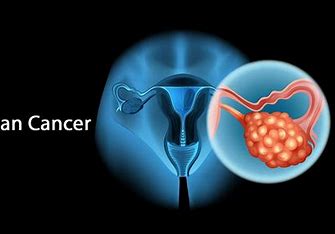Ovarian cancer is a significant health concern affecting women worldwide. It is the eighth most common cancer among women and the fifth leading cause of cancer-related deaths. Ovarian cancer occurs when abnormal cells in the ovaries, the female reproductive organs responsible for producing eggs and hormones, grow uncontrollably. In this article, we will explore the key aspects of ovarian cancer, including its causes, symptoms, risk factors, diagnostic methods, and treatment options. By understanding this disease, its risk factors, and the available treatment strategies, individuals can take proactive steps for early detection and seek appropriate medical care, ultimately improving their chances of successful treatment and survival.
Understanding Ovarian Cancer
Ovarian cancer encompasses several subtypes, with the most common being epithelial ovarian cancer, which originates in the cells that line the surface of the ovaries. Germ cell tumors and stromal tumors are less common but still require attention and appropriate management. These tumors develop from the cells that produce eggs and the cells that support the ovarian tissue, respectively.
Causes and Risk Factors
The precise causes of ovarian cancer are not yet fully understood. However, several risk factors have been identified, including genetic mutations (such as BRCA1 and BRCA2), family history, age, reproductive history, endometriosis, and obesity. By understanding these risk factors, individuals can be more vigilant and proactive in managing their health and seeking appropriate medical care.
Symptoms and Detection
The symptoms of ovarian cancer can be vague and easily mistaken for other conditions. Early-stage symptoms may include bloating, pelvic pain, frequent urination, and changes in bowel habits. As the disease progresses, symptoms may become more pronounced and include abdominal swelling, weight loss, and fatigue. Diagnostic methods for ovarian cancer include imaging tests, blood tests (such as CA-125), and biopsies. However, it is important to note that no single screening test is currently recommended for the general population.
Treatment Options
Treatment for ovarian cancer typically involves a multidisciplinary approach, including surgery, chemotherapy, targeted therapy, immunotherapy, radiation therapy, and hormone therapy. Surgery is often the initial step, aiming to remove as much of the tumor as possible. Chemotherapy is commonly used before or after surgery to kill cancer cells and prevent their spread. Targeted therapy and immunotherapy are newer treatment options that specifically target cancer cells or boost the body’s immune system to fight cancer.
Supportive Care and Survivorship
Managing treatment side effects and providing supportive care is crucial for individuals undergoing ovarian cancer treatment. This includes managing nausea, fatigue, hair loss, and emotional well-being. Rehabilitation, physical therapy, and nutritional support also play important roles in enhancing quality of life during and after treatment.
Prevention and Early Detection
Although the exact prevention of ovarian cancer remains challenging, certain strategies can help reduce the risk. These include the use of oral contraceptives, pregnancy, risk-reducing surgeries such as salpingectomy, and maintaining a healthy lifestyle. Recognizing the early signs and symptoms of ovarian cancer and regularly attending health check-ups can facilitate early detection and improve treatment outcomes.
Conclusion
Ovarian cancer is a complex disease that requires comprehensive understanding for effective prevention, early detection, and treatment. By recognizing the risk factors associated with ovarian cancer and being aware of the common symptoms, individuals can seek prompt medical attention and improve their chances of successful treatment and survival. With advances in diagnostic techniques and treatment options, significant progress has been made in the management of ovarian cancer. Moreover, supportive care and survivorship programs play a vital role in enhancing the overall well-being and quality of life for individuals affected by this disease. By promoting prevention strategies, advocating for early detection, and investing in research for innovative treatment approaches, we can make significant strides in combating ovarian cancer and improving outcomes for women around the world.

